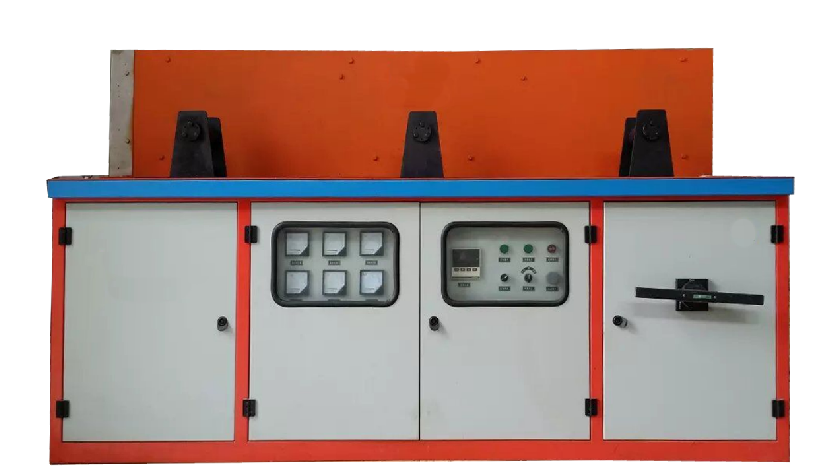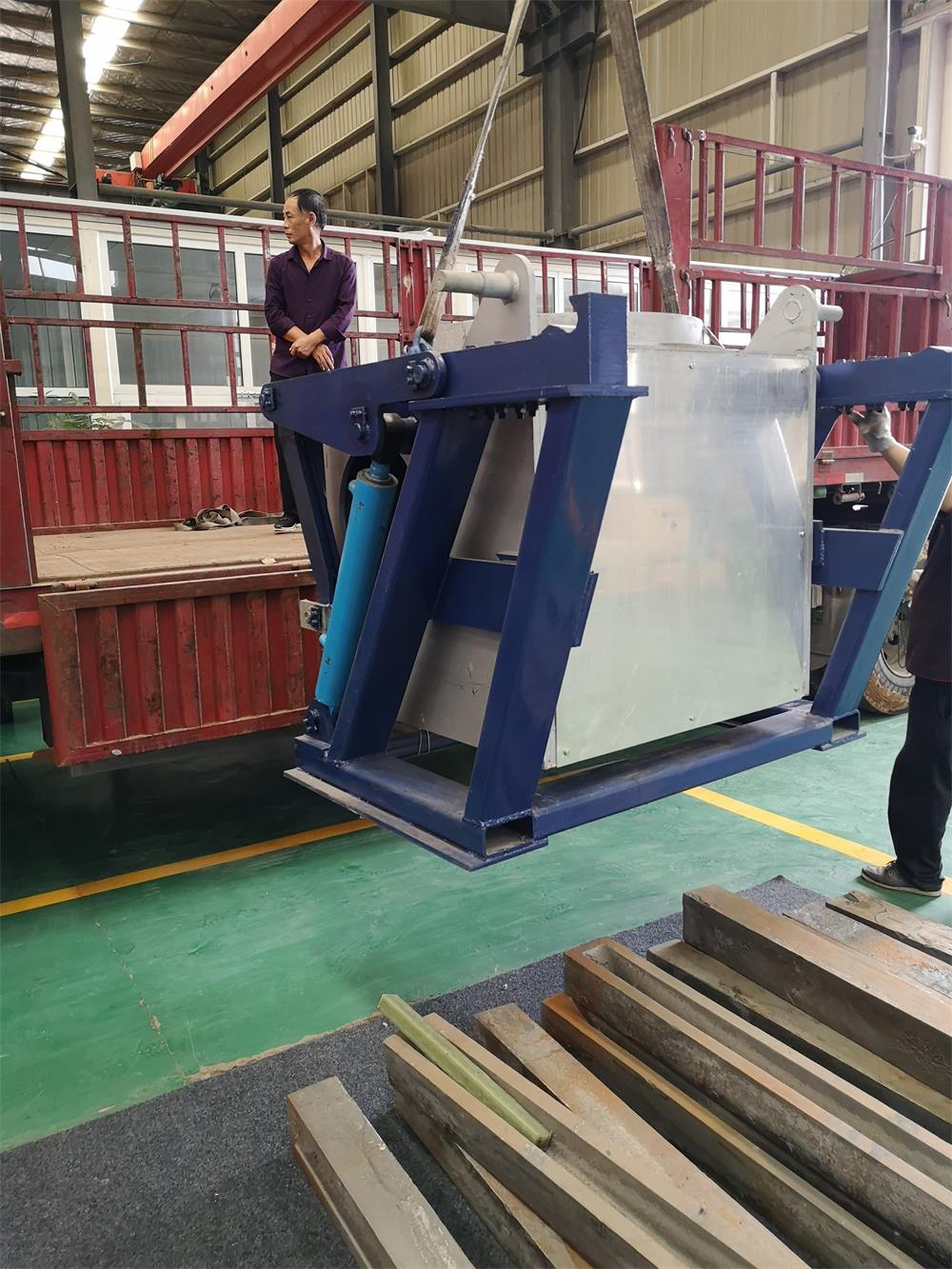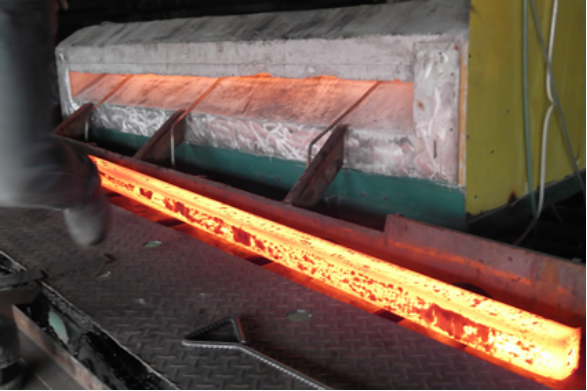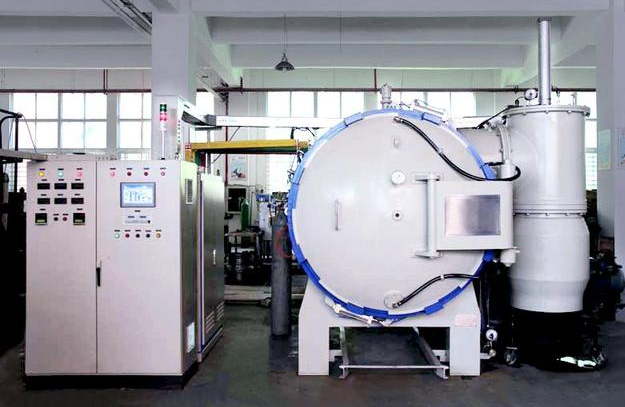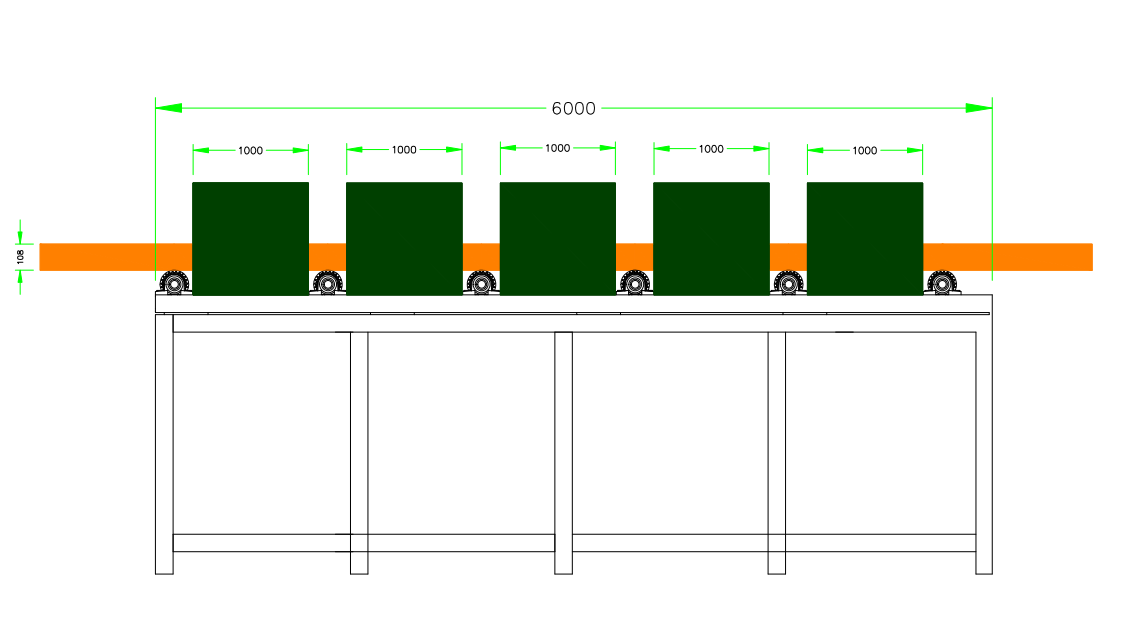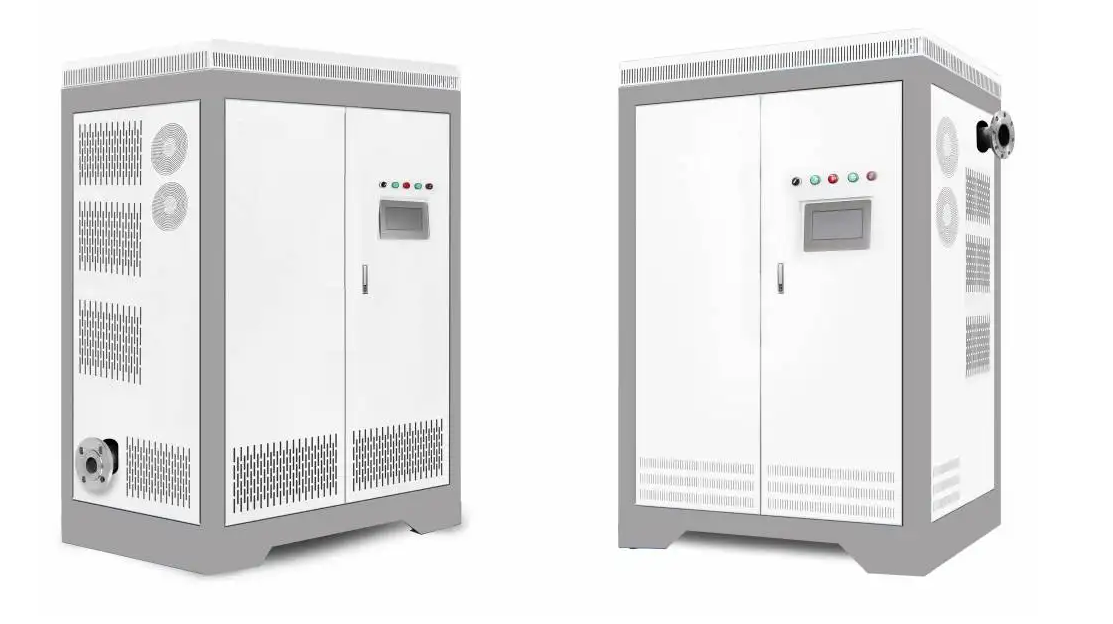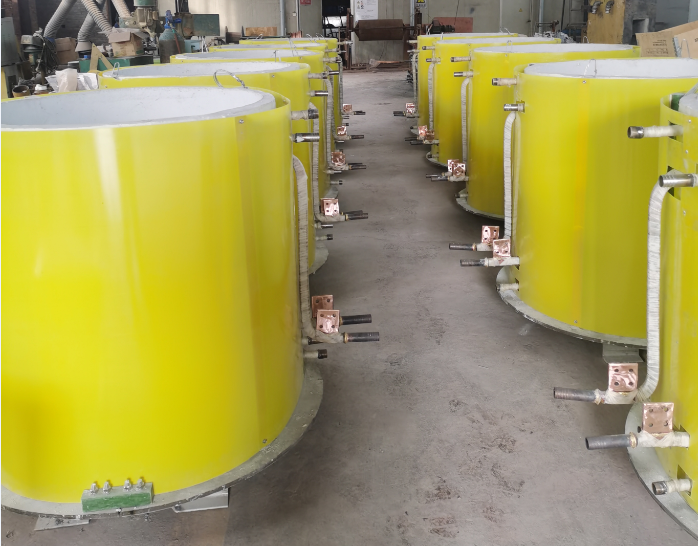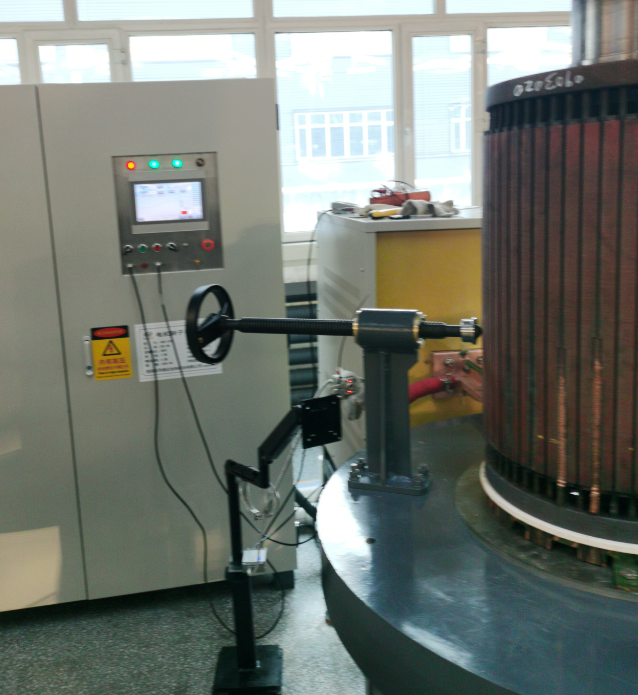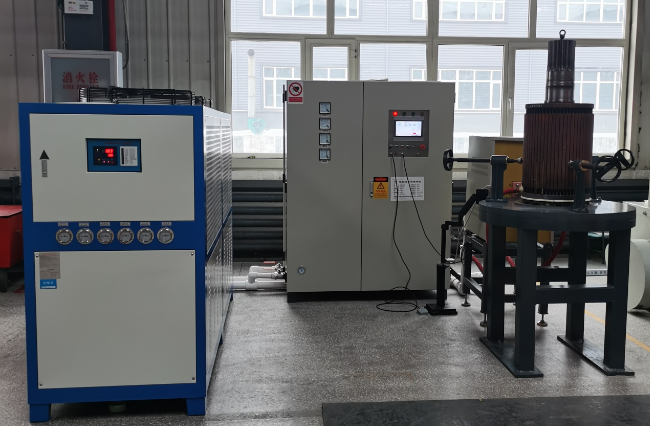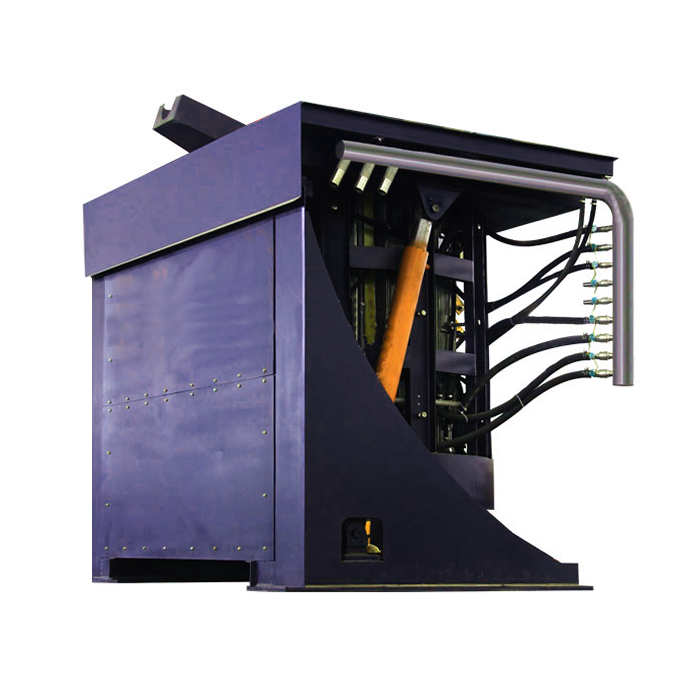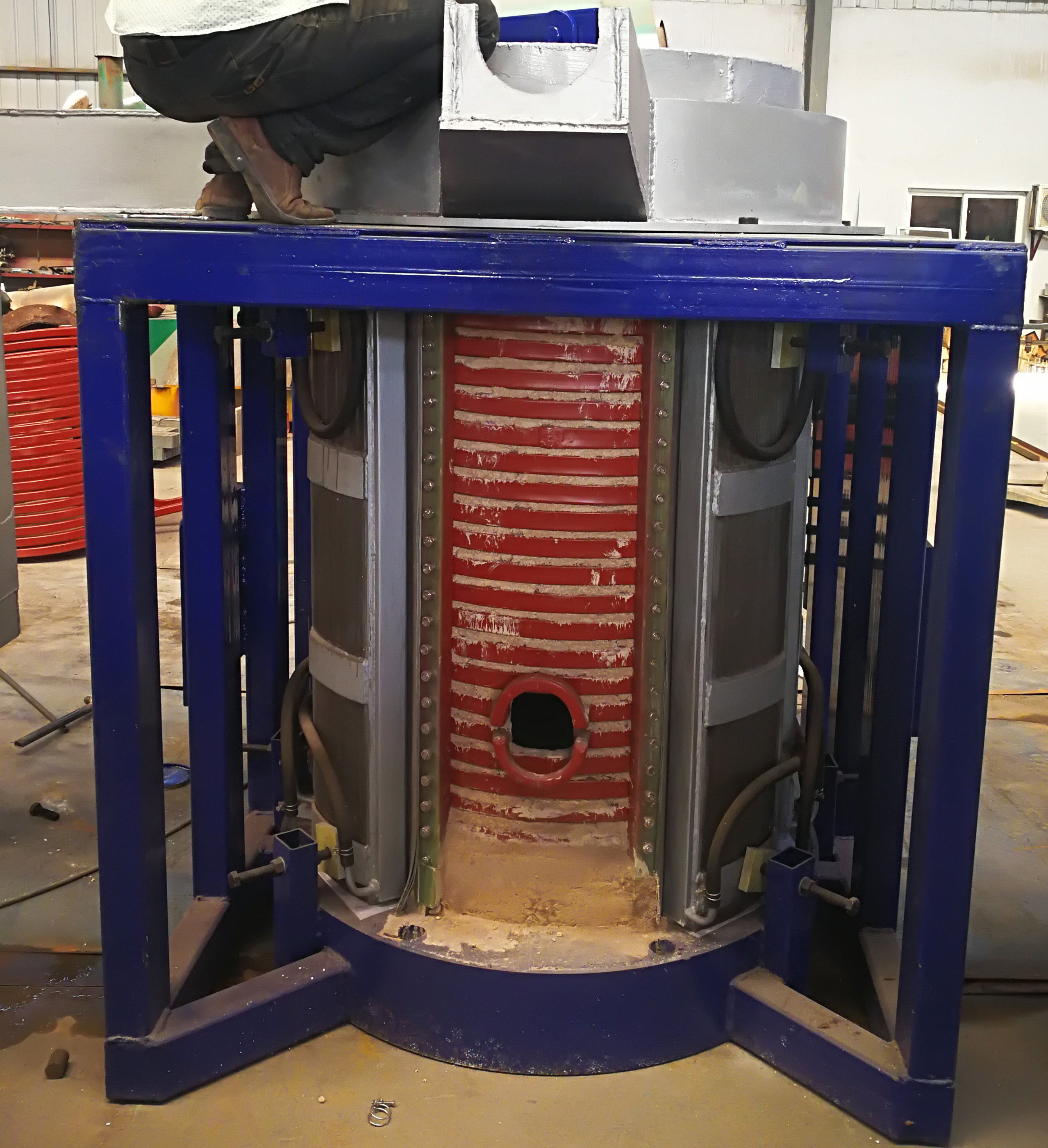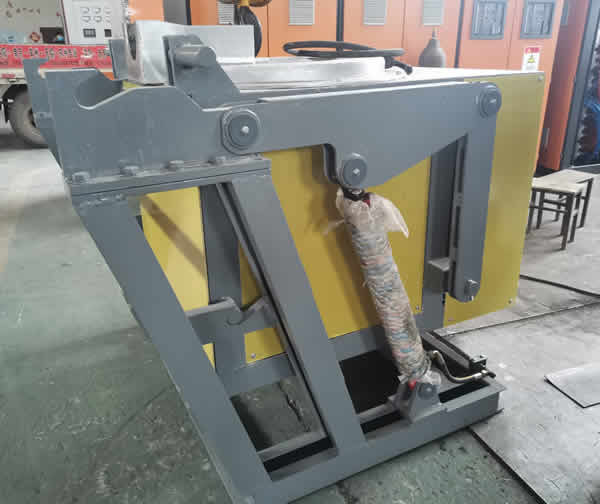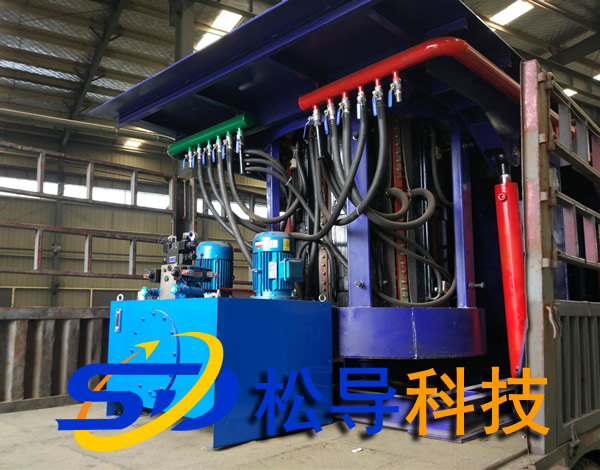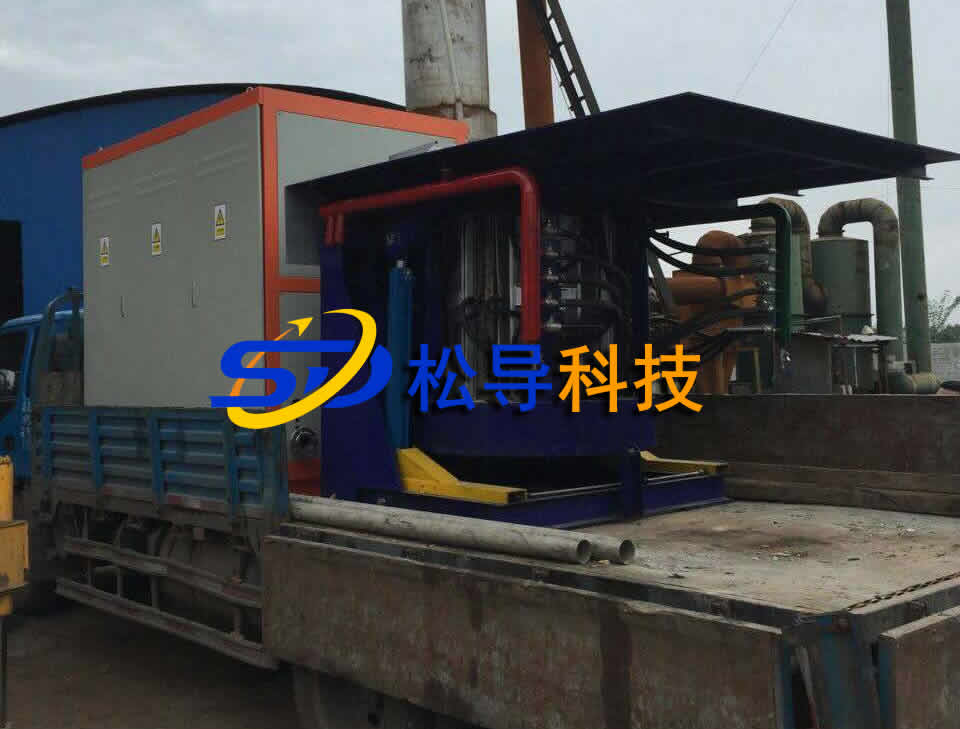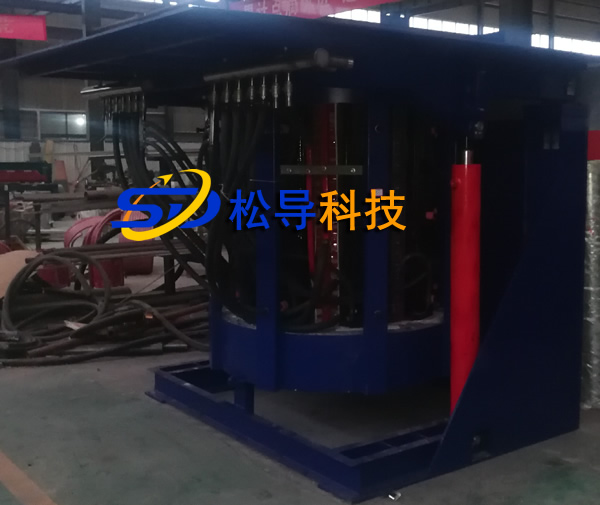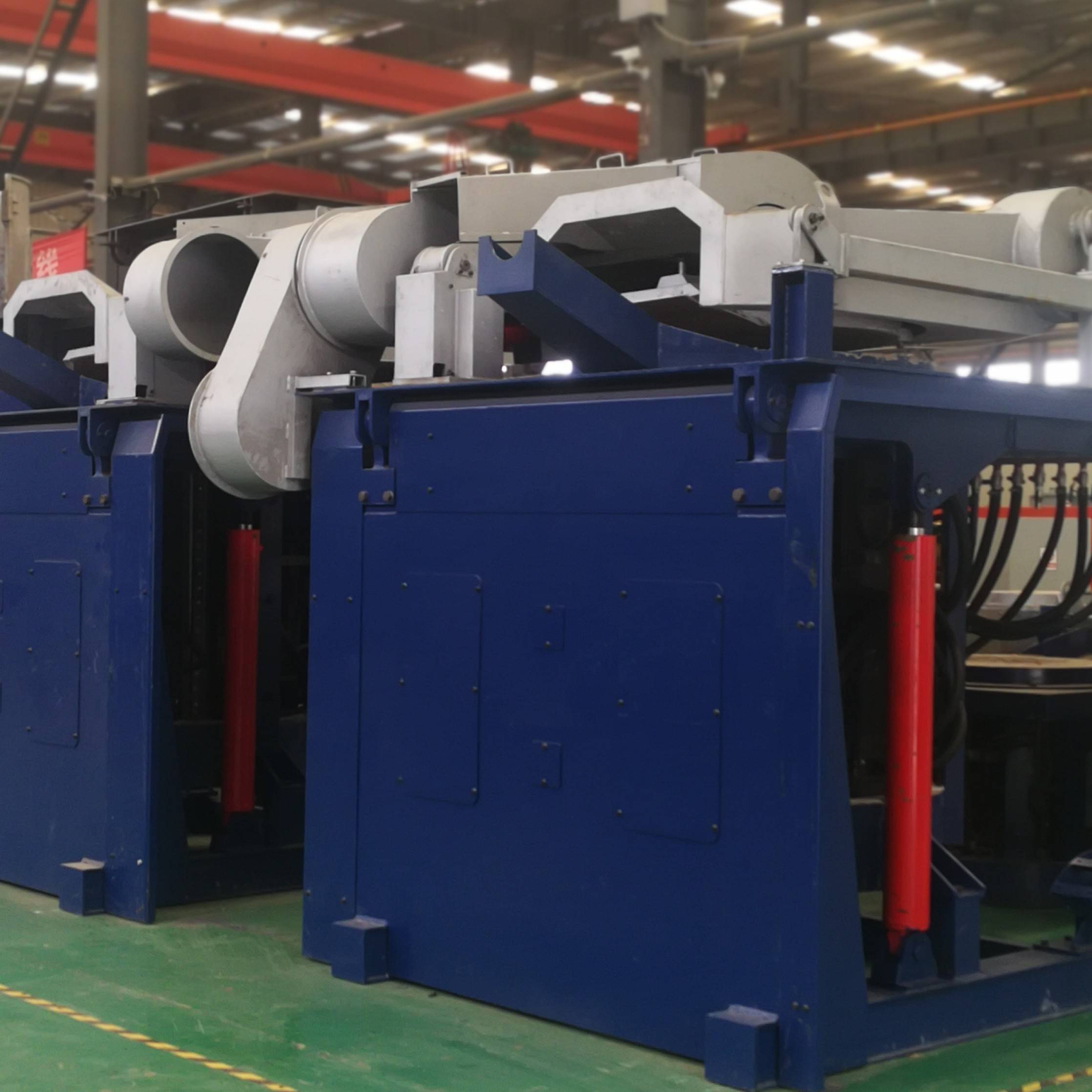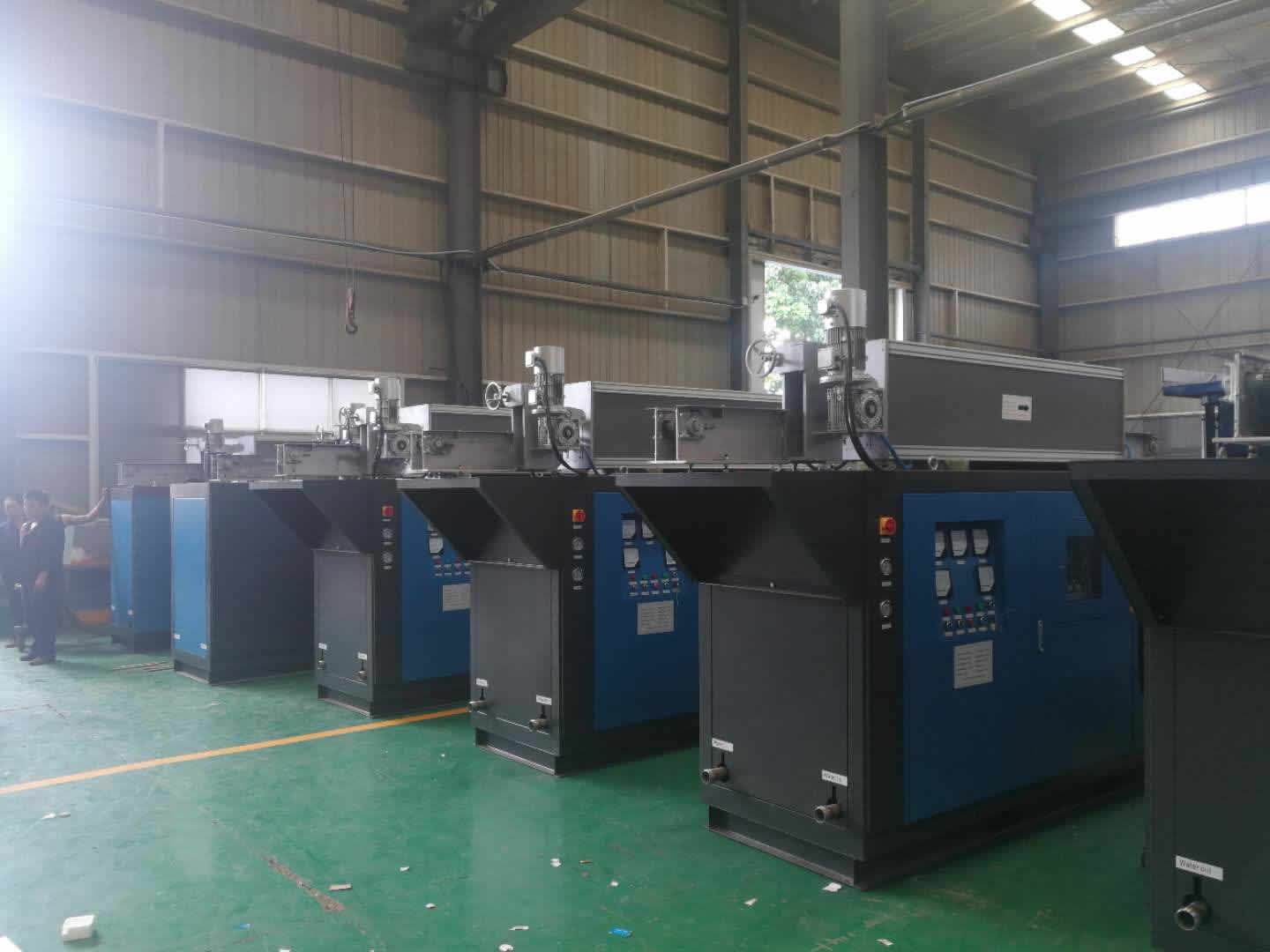
洛阳松导感应加热科技有限公司
联系方式:15038554363
24小时技术热线:15038554363
邮 箱:1390003299@qq.com
厂址:河南省洛阳市洛新工业园区
国内研制首创采用中频感应炉精炼技术,在冶炼合金钢,特殊要求钢时,可使中频感应炉由“化钢”转变为炼钢,使其质量指标达到目前的AOD,VOD,LF精炼炉,VD真空脱气炉的质量水平,是适用于中小炉型冶炼及铸造企业提高质量,减少废品的一个重要途径,是一种投资少,见效快,成本低,质量高的生产工艺,是一种节能降耗的环保型生产工艺,是一种吨流程的生产工艺。本技术是根据不同的钢种,不同的要求,不同的气体通过中频感应炉精炼供气系统的控制气体流量,达到去除夹渣物及〖O〗〖N〗〖H〗含量或特殊要求所需脱碳及含氮钢时吹入氮气增氧。
中频炉吹氩精炼的原理:感应炉底吹氩精炼过程是在钢液预脱氧完成,取样分析补加合金料后,将高纯度氩气通过安装在炉底的气体扩散器导入钢液(只会透气不会渗楼钢液)当氩气通过气体扩散器,分散度较高,具有较大上升速度的气泡流。无数的气泡通过钢液将会把〖O〗〖N〗〖H〗及夹杂物带出钢液,从而达到精炼的作用。
钢液内部每个氩气泡就是一个小的“真空室”在氩气气泡里不含〖O〗〖N〗〖H〗的气体,也就是说氩气泡里面这些气体的分压力等于零。
当分压力很高的氩气泡穿过钢液时,呈溶解状态存在的〖O〗〖N〗〖H〗和非溶解状态存在的CO等均会自动地进入氩气泡内,并随着气泡上升而溢出,从而达到脱气的目的,达到去除非金属夹杂物的目的。
从2011年8月初开始进行了中频精炼炉冶炼,精炼后钢的质量纯净度大大提高,精炼前后的夹杂物对比明显降低,气体含量大大减少,具体对比如下:
1、吹氩精炼去除铅〖pb〗的效果
|
钢种 |
吹Ar min |
精炼前(%) |
精炼后(%) |
降低率(%) |
|
40 |
20 |
0.0087 |
0.0016 |
80.4 |
|
AISI430 |
19 |
0.0300 |
0.008 |
78.2 |
2、吹氩精炼去氢〖H〗的效果
|
钢种 |
吹Ar min |
〖H〗含量 的变化/10-6 |
降低率(%) |
|
|
精炼前(%) |
精炼后(%) |
|||
|
40 |
20 |
12.0 |
2.8 |
75.9 |
|
AISI430 |
35 |
9.3 |
4.51 |
52.1 |
|
2GMN13 |
31 |
7.9 |
4.15 |
50.0 |
3、夹杂物:
钢中非金属夹杂物显微评定方法GB10561-2005
|
项目 |
A |
B |
C |
D |
|
硫化物 |
氧化物 |
硅酸盐 |
球状氧化物 |
|
|
精炼前平均 |
1.8级 |
1.7级 |
1.5级 |
2.1级 |
|
精炼后平均 |
0.55级 |
0.64级 |
0.5级 |
0.67级 |
|
平均降低% |
69 |
62 |
67 |
68 |
现实测标准完全满足技术要求:
4、氢含量小于1.0ppm,满足模具钢要求≦2.5ppm,其他钢种≦3.0ppm。
5、养含量小于0.0050%。
6、对钢锭加工后,进行超声波检测均达到(GB/T133515-1991)二级标准。
7、对304等不锈钢精炼与不锈钢的机械性能对比:(GB/T328-2002)
1)抗拉强度:精炼钢前549.53Mpa 精炼后606.82Mpa提高57.29Mpa
2)屈服强度:精炼钢前270Mpa 精炼后339.52Mpa提高69.52Mpa
3)最大力:精炼钢前38.46pa 精炼后49.10Mpa提高10.64Mpa
本技术实用于感应炉及工频炉。吨座为0.5T-20T炉体。实用于
1、碱性MgO砂炉衬。2、弱碱性MgO+AI2O3炉衬。3、中性刚玉AI2O3炉衬。
4、偏酸性中性AI2O3 + SiO2炉衬。5、酸性石英砂炉衬。
本技术不会增加冶炼时间,因为精炼是在加完合金料进行熔化过程中进行精炼,因而不会延冶炼时间,从而也不会增加电耗。
因钢液经过精炼,使产品质量明显提高。而成本有所增加。每吨钢同步增加8.23元。钢质量的提高、废品的减少、总的来讲成本还是降低的。
Medium frequency induction furnace refining furnace
The domestic development of the first use of medium frequency induction furnace refining technology, in the smelting of alloy steel, special requirements steel, the medium frequency induction furnace can be transformed from "chemical steel" to steelmaking, so that its quality indicators reach the current AOD, VOD, LF refining furnace, The quality level of VD vacuum degassing furnace is an important way for small and medium-sized furnace smelting and casting enterprises to improve quality and reduce waste. It is a production process with low investment, quick effect, low cost and high quality. It is a kind of production process. An environmentally friendly production process that saves energy and reduces consumption is a production process of a ton process.This technique is based on different steel types, different requirements, different gas refinery desired gas flow control systems for supplying gas through an intermediate frequency induction furnace, slag removal was reached and〖O〗〖N〗〖H〗 content or special requirements Nitrogen is added to the decarburization and nitrogen-containing steel.
The principle of argon refining in intermediate frequency furnace: the argon refining process in the induction furnace bottom is completed in the pre-deoxidation of molten steel. After sampling and analysis, the high-purity argon gas is introduced into the molten steel through the gas diffuser installed at the bottom of the furnace. Will be ventilated will not seep the steel liquid) When argon gas passes through the gas diffuser, the dispersion is higher, and the bubble flow has a larger rising speed. Numerous bubbles passing through the molten steel will bring 〖 O 〗 〖 N 〗 〖 H 〗 and inclusions out of the molten steel to achieve refining.
Each argon bubble inside the molten steel is a small "vacuum chamber" containing no gas of 〖O〗〖N〗〖H〗 in the argon bubble, that is, the partial pressure of these gases in the argon bubble is equal to zero.
When the argon bubble with a high partial pressure passes through the molten steel, the presence of O in the dissolved state, [N], H, and the CO in the insoluble state, will automatically enter the argon bubble, and as the bubble rises. Spilling, in order to achieve the purpose of degassing, to achieve the purpose of removing non-metallic inclusions.
Since the beginning of August 2011, the intermediate frequency refining furnace has been smelted. The purity of the steel after refining has been greatly improved. The contrast of inclusions before and after refining has been significantly reduced, and the gas content has been greatly reduced. The specific comparison is as follows:
1. Effect of argon refining to remove lead 〖 pb 〗
|
Steel grade |
Blowing Ar min |
Before refining ( %) |
After refining ( %) |
Reduction rate ( %) |
|
40 |
20 |
0.0087 |
0.0016 |
80.4 |
|
AISI430 |
19 |
0.0300 |
0.008 |
78.2 |
2, the effect of argon refining to hydrogen 〖 H 〗
|
Steel grade |
Blowing Ar min |
〖 H 〗 content Change/10-6 |
Reduction rate ( %) |
|
|
Before refining ( %) |
After refining ( %) |
|||
|
40 |
20 |
12.0 |
2.8 |
75.9 |
|
AISI430 |
35 |
9.3 |
4.51 |
52.1 |
|
2GMN13 |
31 |
7.9 |
4.15 |
50.0 |
3, inclusions:
Microscopic evaluation method for non-metallic inclusions in steel GB10561-2005
|
project |
A |
B |
C |
D |
|
Sulfide |
Oxide |
Silicate |
Spherical oxide |
|
|
Average before refining |
Level 1.8 |
Level 1.7 |
Level 1.5 |
Level 2.1 |
|
Average after refining |
Level 0.55 |
Level 0.64 |
Level 0.5 |
0.67 level |
|
Average reduction by % |
69 |
62 |
67 |
68 |
The actual measurement standard fully meets the technical requirements:
4. The hydrogen content is less than 1.0ppm, which meets the requirements of mold steel ≦2.5ppm, and other steel grades ≦3.0ppm.
5. The nutrient content is less than 0.0050%.
6. After the steel ingot is processed, the ultrasonic testing has reached the secondary standard (GB/T133515-1991).
7. Comparison of mechanical properties of 304 stainless steel refining and stainless steel: (GB/T328-2002)
1) Tensile strength: 549.53Mpa before refining steel, 56.82Mpa after refining, increase 57.29Mpa
2) Yield strength: 270Mpa before refining steel, 339.52Mpa after refining, 69.52Mpa
3) Maximum force: 38.46pa before refining steel, 10.64Mpa after refining 49.10Mpa
The technology is applied to induction furnaces and power frequency furnaces. The tonnage is 0.5T-20T furnace body. Practical use
1. Alkaline MgO sand lining. 2. Weakly alkaline MgO+AI 2 O 3 furnace lining. 3. Neutral corundum AI 2 O 3 furnace lining.
4. Acidic neutral AI 2 O 3 + SiO2 furnace lining. 5. Acidic quartz sand lining.
This technique does not increase the smelting time, because refining is performed during the melting process of the alloy material, so that the smelting time is not extended, and thus the power consumption is not increased.
Due to the refining of the molten steel, the quality of the product is significantly improved. And the cost has increased. Synchronous increase of 8.23 yuan per ton of steel. The improvement of steel quality, the reduction of waste, and the overall cost are still reduced.
手 机:15038554363
技术支持:绿色名炉商城
